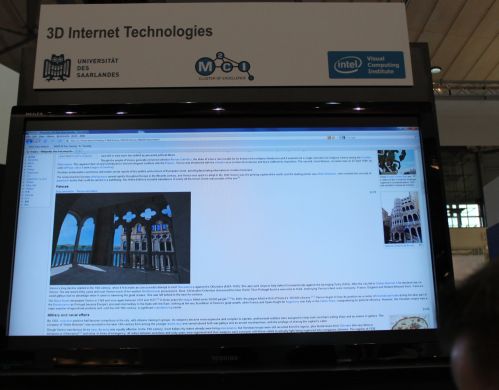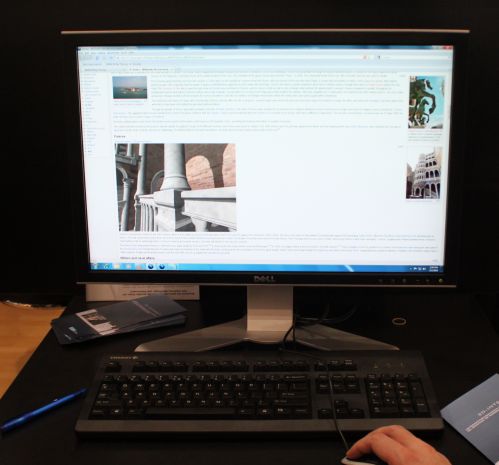The University of Saarland (Intel Visual Computing Institute) in cooperation with DFKI made a pretty interesting presentation with XML3D and this technology enables 3D content in standard HTML based web pages.
The great thing about XML3D is the fact that it just stacks on top of regular HTML adding 3D capabilities, which makes integration with existing web pages easy. With XML3D we can easily add web content that includes interactive high-quality real time graphics and it is pretty easy to grasp if you are already familiar with web programming.

All 3D objects are a part of DOM (Document Object Model) and can be interchanged quickly using simple Javascript programs. Portable shader model AnySL allows for realtime Ray Tracing, but should feature some sort of OpenGL implementation.
From what we’ve seen on the presentation it looks really exciting and the best thing is that XML3D actually works. XML3D will be supported by standard web browsers like Firefox, but we’re not sure whether Microsoft will use it in IE, at least not anytime soon. You can contact Prof. Dr. Philipp Slusallek for more information (email Philipp.Slusallek@DFKI), or loot here.


